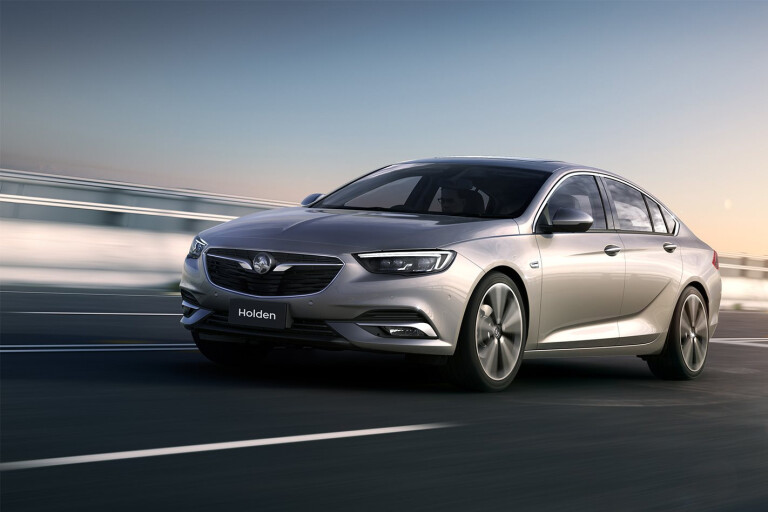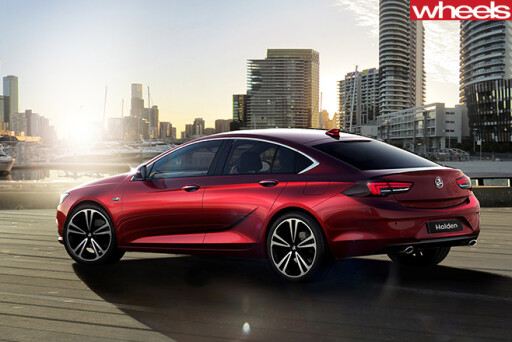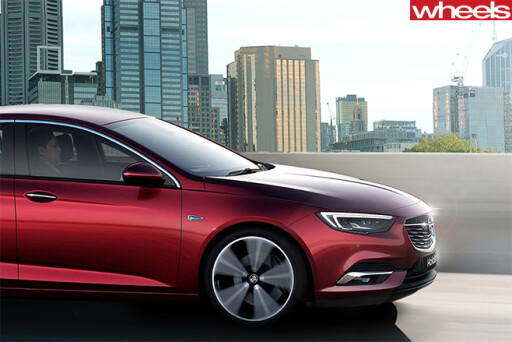
WHEN Holden introduced the Commodore in 1978 it was marketed as Australia’s first world car, and a generational leap from the much-loved H-models.
Forty years on, an all-new Commodore won’t be rolling out of Australian plants. However it represents an even greater leap forward with advanced technology – some of which is yet to make its way into more expensive luxury cars.
While there’s plenty of focus on what the Opel-built Commodore won’t have – such as a V8 option, rear-wheel drive, and SS variants – it’s hard to ignore what it will be bringing to Holden showrooms in early 2018.
Holden is yet to announce variants and equipment levels of the lift-back sedan and Sportwagon models, but we know the range topper will come with a modified version of the current 3.6-litre V6 engine, state-of-the-art all-wheel-drive system, adaptive suspension, LED matrix headlights and advanced driver assist technology.
 The updated V6 engine delivers 230kW/370Nm, about 10 percent more than the current model, while providing greater efficiency through stop-start engine technology and active fuel management including the ability to shut down two cylinders when appropriate.
The updated V6 engine delivers 230kW/370Nm, about 10 percent more than the current model, while providing greater efficiency through stop-start engine technology and active fuel management including the ability to shut down two cylinders when appropriate.
It will deliver this power to all four corners via a nine-speed automatic transmission (another Holden first).
Other engine options will include 2.0-litre, four-cylinder turbo petrol and turbo diesels. Holden is yet to release more information about these, but it’s believed the petrol version will push out 184kW, which is about the same as the current 3.0-litre V6 in the Evoke models but with about 300kg less lard to push around.
Advanced AWD
The AWD variant will feature GM’s new Twinster system that ditches the rear differential for a pair of clutches, enabling finite control of individual wheel torque and speed. Those lamenting the lack of a rear diff will be pleased to know the system features a Sport mode that includes torque vectoring and Dynamic Wheel Torque Brake (DWT-B) to create a proper rear-drive feel.
Sport mode also changes the dampers to reduce brake dive, providing flatter and more responsive chassis control at high speeds.
 Other driving modes include: Tour - a comfortable chassis configuration, and throttle response to maximise fuel use for long distance driving – and Standard, which automatically controls the best set-up based on the information collected by the vehicle’s array of sensors.
Other driving modes include: Tour - a comfortable chassis configuration, and throttle response to maximise fuel use for long distance driving – and Standard, which automatically controls the best set-up based on the information collected by the vehicle’s array of sensors.
It does this using the ‘FlexRide’ suspension system that continuously adapts the dampers to the road and the driving conditions 500 times a second, or 30,000 times a minute if you like bigger numbers.
It works in conjunction with ‘Drive Mode Control’ software that continuously analyses the information provided by the sensors and settings and recognises the individual driving style to provide the best traction and road position.
“Next level driving”
Jeremy Tassone, Holden’s engineering group manager for vehicle development, said the technical underpinnings take the Commodore’s reputation as a driver’s car to the next level.
“From its cutting-edge all-wheel-drive system, to nine-speed transmission and adaptive suspension, this is a true driver’s car in the way Commodore has always been. We’re taking the best of Europe and making it even better for our Australian customers,” he said.
 The next generation Holden Commodore will also feature advanced driver assistance technology, some of which was unavailable to the model it replaces. The tech roll-out will include autonomous emergency braking, adaptive cruise control, speed limit cruise control, lane departure warning, lane keep assist, forward collision alert, side blind-zone alert, rear cross-traffic alert and 360-degree camera.
The next generation Holden Commodore will also feature advanced driver assistance technology, some of which was unavailable to the model it replaces. The tech roll-out will include autonomous emergency braking, adaptive cruise control, speed limit cruise control, lane departure warning, lane keep assist, forward collision alert, side blind-zone alert, rear cross-traffic alert and 360-degree camera.
Premium options
There will also be a range of creature comforts available including: massage seats, rear one-touch folding seats, heated front and rear seats, ventilated front seats, express up/down all windows, wagon power lift-gate and active noise cancellation.
This is a lot of kit, which puts the top-spec Commodore in executive saloon territory against the likes of the Mercedes-Benz C-Class, BMW 3 Series and Lexus ES and other luxury contenders such as the upcoming Kia GT and Hyundai G80 – the Commodore v Falcon war already seems a distant memory.
While not elaborating on which features will be standard, Holden’s executive director of sales, Peter Keley, said the Commodore would “combine technology across a number of areas in a way that you would usually only find in high-end prestige vehicles, and makes it available for everyday Australians”.
 Built on GM’s new E2 platform, the next generation Holden Commodore will be a little smaller than the VF model. At 4899mm long and 1863mm wide it will be 74mm shorter and 36mm narrower than the VF. Its 2829mm wheel base is 86mm shorter, making it about the same size as the third-generation VT-VZ (1997-2006) Commodore, which wasn’t exactly small.
Built on GM’s new E2 platform, the next generation Holden Commodore will be a little smaller than the VF model. At 4899mm long and 1863mm wide it will be 74mm shorter and 36mm narrower than the VF. Its 2829mm wheel base is 86mm shorter, making it about the same size as the third-generation VT-VZ (1997-2006) Commodore, which wasn’t exactly small.
Inside, this translates to 58mm less shoulder room than the VF with 44mm less hip room. The sweeping roofline of the sedan cuts rear headroom by 13mm but the extra glass means rear passengers will have a better view – and there will significantly more boot space.
It remains to be seen how Australia will receive the first fully imported Commodore. There is bound to be a sentimental backlash, however, when looked at in isolation the new generation model looks, on paper at least, like it could win Holden plenty of new fans.

COMMENTS